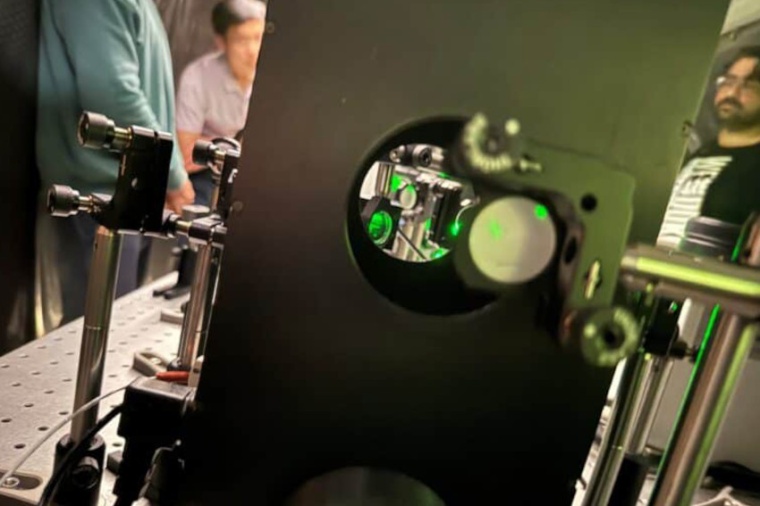Optical knots made of laser beams
Interference patterns between overlapping laser beams could transmit encoded information over thousands of feet through chaotic environments.
Knots are generally understood to form due to twists and turns of long, flexible materials that keep shoes on your feet or frustrate your attempts at hanging holiday decorations. A beam of light doesn’t sound like a material that can create a knot. Imagine throwing several rocks into a pond all at once. At a certain point on the water’s surface, the resulting ripple rings would all mix to form a complex pattern. Now imagine being able to control the shape and speed of each ring. With enough planning, you could get that mesh point to form complex shapes in 3D on demand. For the past few years, researchers have essentially been doing this with light. By overlapping several laser beams with specific properties and directing them through a series of lenses, interference patterns can form a stationary “optical knot” that looks something like a complex web of smoke rings at a desired point in space.

Now, engineers at Duke University have demonstrated a sort of holographic strip that splits a single laser beam into five bespoke beams that create an optical knot. The work shows that optical knots could be used as a reliable method to transmit encoded information or to measure turbulence in pockets of air. The team was able to show that information embedded into these optical knots can survive the constituent lasers traveling through turbulent air – but not as easily as scientists originally believed. “People thought that because these shapes are mathematically stable objects, they should be able to be transmitted through complex environments without any complications,” said Natalia Litchinitser. “As it turns out, they’re not guaranteed to be stable, but we can make them more stable.”
To produce this result, the researchers had to essentially use a small convection oven. While it is possible to simulate a laser traveling through turbulence with the use of fiber optic devices, the team wanted to replicate the real thing over a long distance. But while their collaborators in South Africa have a set up spanning two separate buildings, the Duke team was relegated to a single dining-room-sized table. “We used a small toaster-oven-sized device with a hot plate in the bottom and fans to create air turbulence,” explained Danilo Gomes Pires, a postdoctoral scientist working in Litchinitser’s lab. “Then we shrunk the light beam and bounced it off several mirrors to mimic it traveling almost 1,000 feet.”
If the laser beams were unperturbed by their journey, the resulting knot should have looked like one continuous, flowing string with three loops. But instead, the researchers found that, as the turbulence got more intense, the knot was more likely to devolve into two interconnected rings or even a single ring, losing any of the information it contained. But they also discovered that this degradation was not inevitable, and that they could make the knot stable for longer. By adding more squiggles to its otherwise smooth features – like building a complicated twisting and turning waterslide instead of a simple winding ride – they created more reference points to measure within a given plane.
While tying optical knots is still a technology in its infancy – they were only discovered about two decades ago – it has several potential applications. Information could be encoded into their shapes and transmitted over long distances. Measuring how much the knot is disrupted by its travels could also lead to ways to measure the amount of turbulence it passed through. Researchers also believe that the intricacies of the resulting knots could be used to trap and manipulate tiny particles in 3D space. “Before we can actually use optical knots for any kind of application, we have to really study them and understand how they behave,” Litchinitser said. “Ours is the first demonstration of propagating through real turbulence, so from here we can take the next step and scale it up to continue exploring how these work in free space.” (Source: Duke U.)
Link: Dept. of Electrical and Computer Engineering, Duke University, Durham, USA











